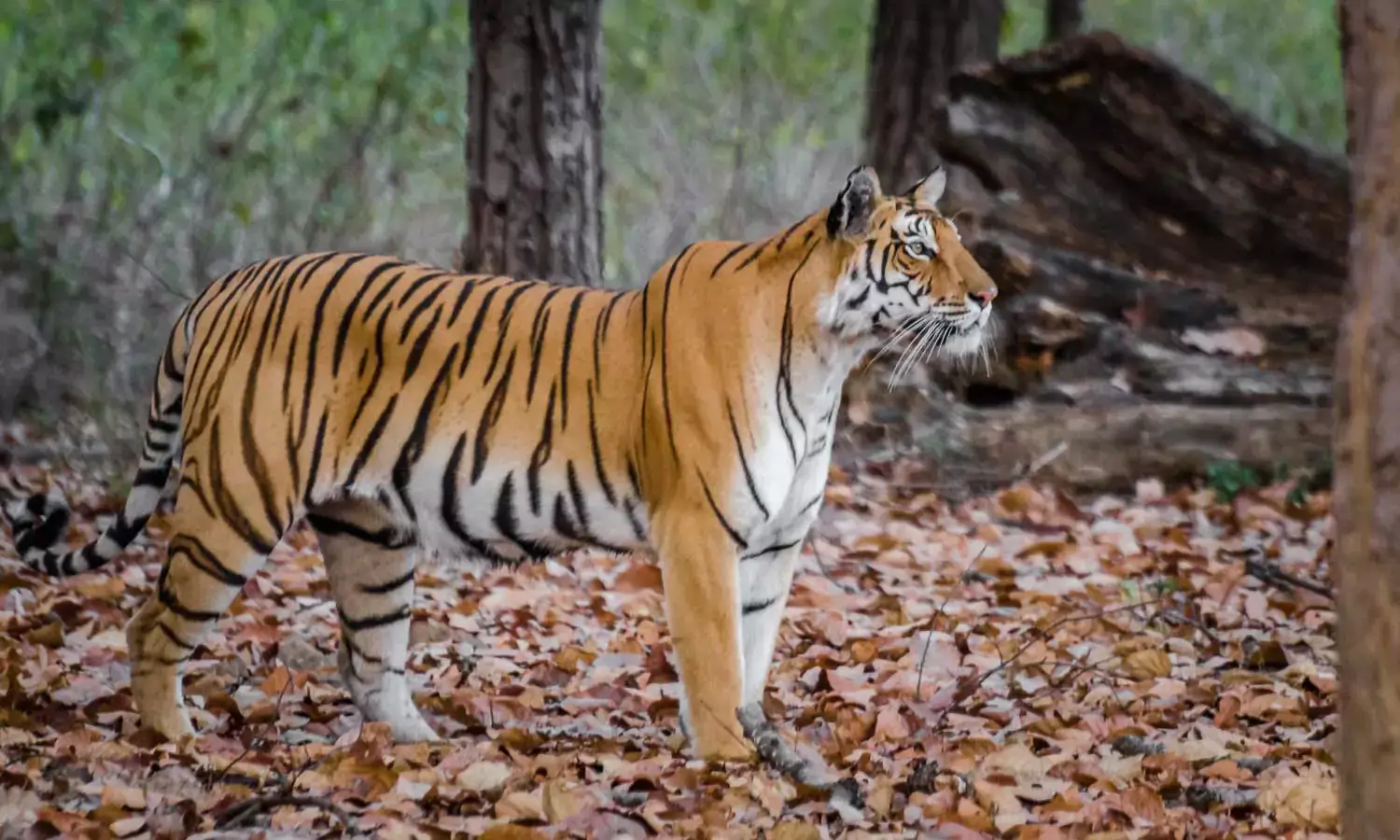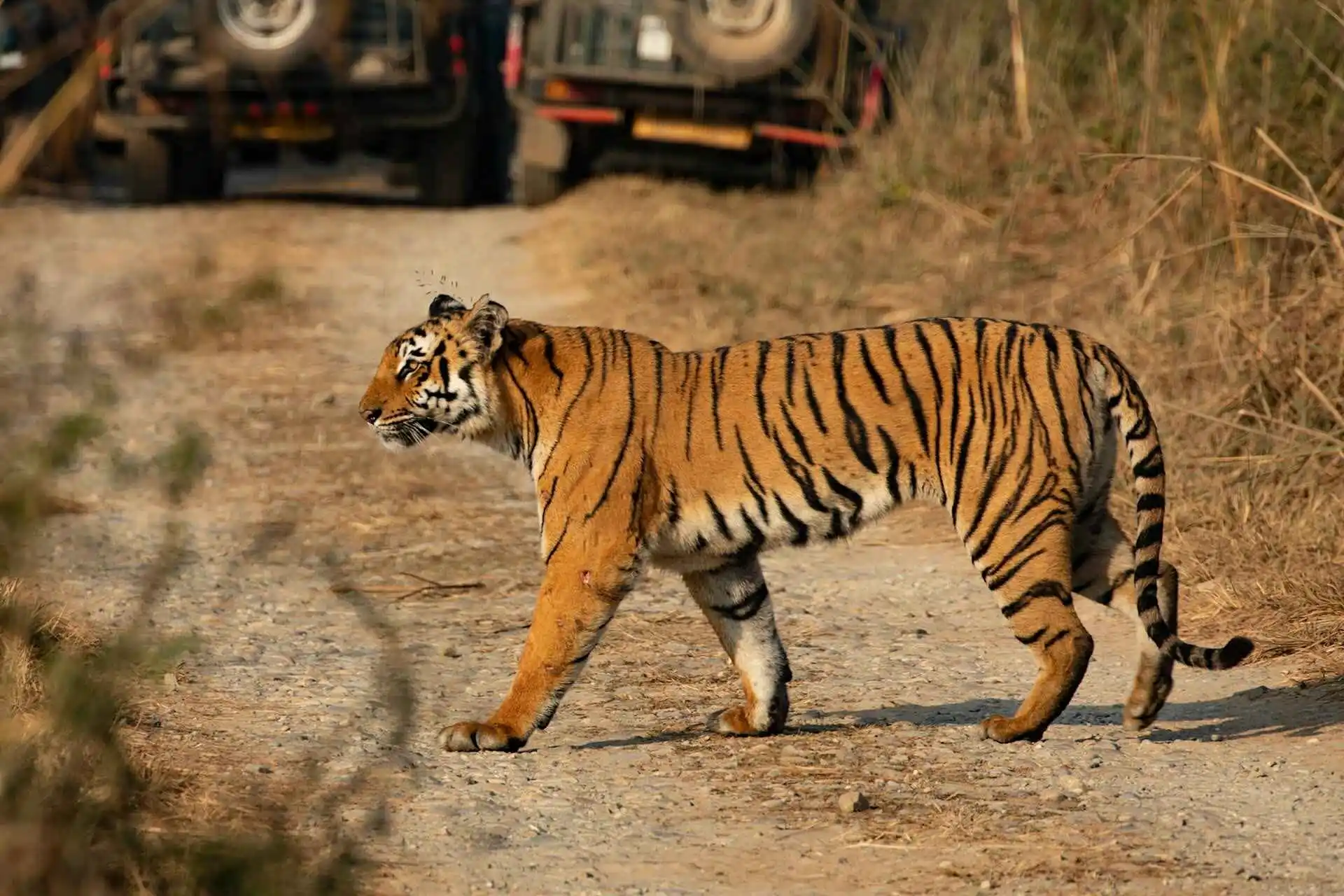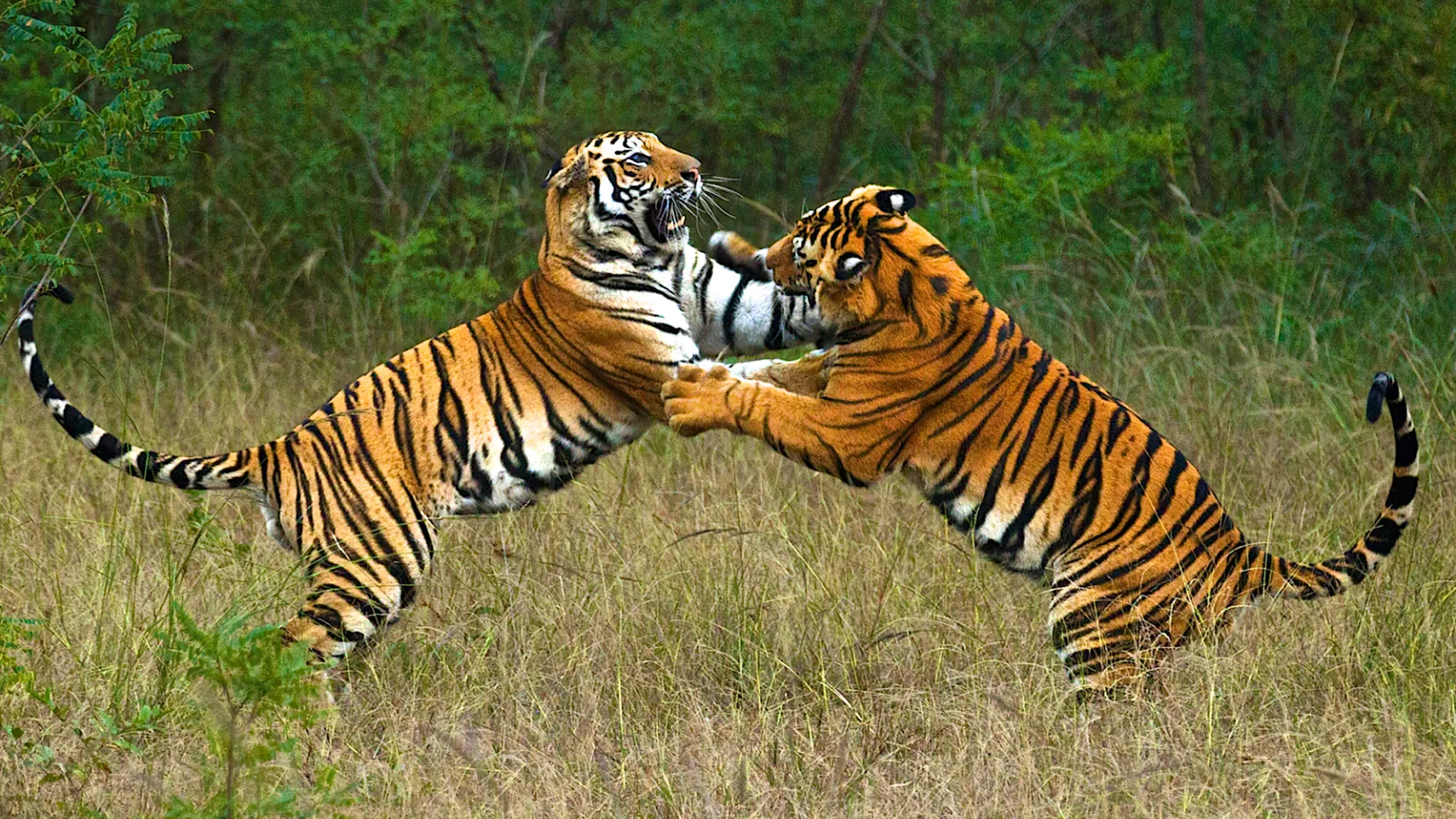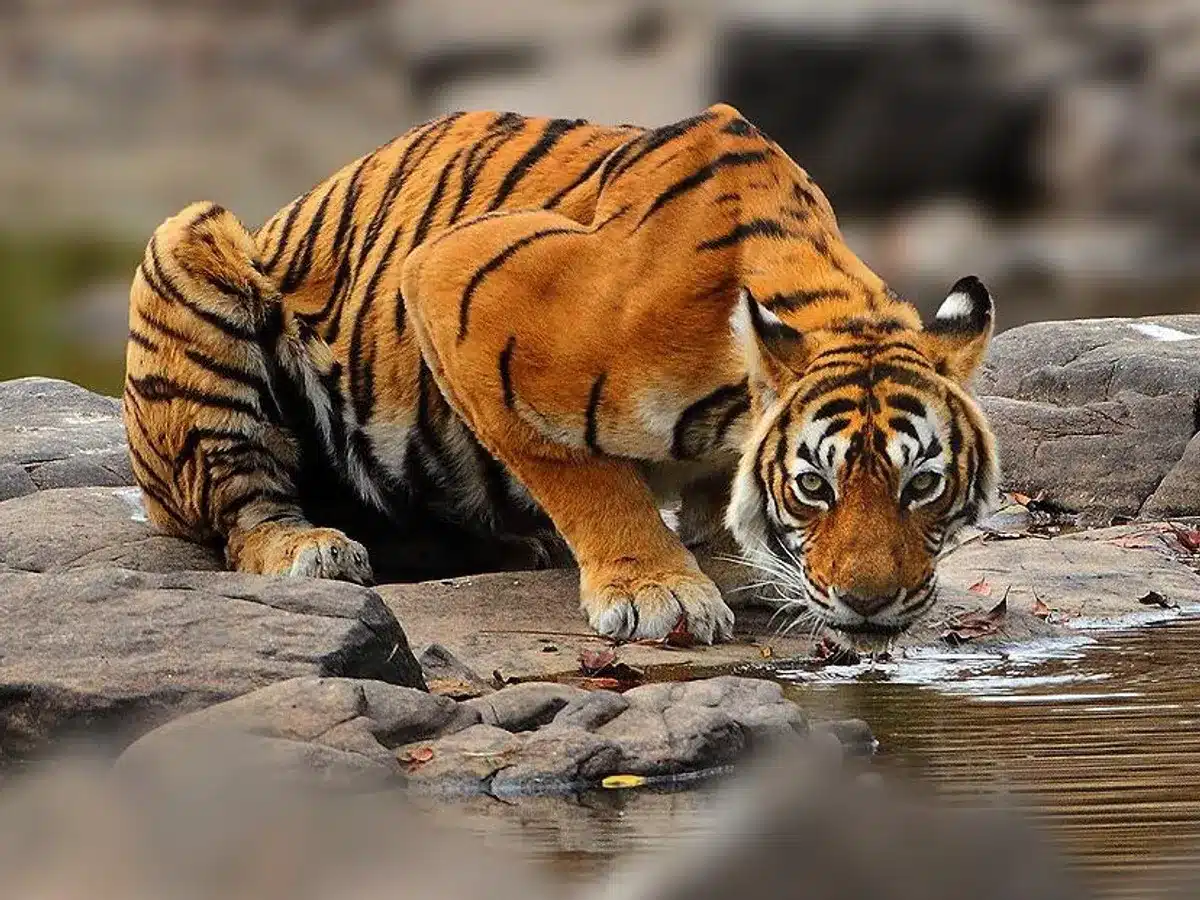Explore Panna in Comfort: Curated Luxury Jungle Escapes
Overview: Explore the wild beauty of Panna National Park while staying in some of Central India’s most enchanting
Bandhavgarh National Park, located in the heart of India, in the state of Madhya Pradesh, is one of the most renowned wildlife sanctuaries in the country. It is not only famous for its rich biodiversity but also for its deep historical, religious, and spiritual significance. The park is home to the majestic Royal Bengal Tiger, along with other fascinating wildlife species, and boasts a landscape filled with ancient ruins and caves, offering visitors an immersive experience that combines adventure, history, and spirituality.

The name Bandhavgarh is a fusion of two words: Bandhav meaning brother and Garh meaning fort, which translates to “brother’s fort.” According to legend, Bandhavgarh was a gift from Lord Rama to his brother Lakshmana. The mythological significance of the area is reflected in the presence of ancient ruins and sites of spiritual importance. Among the most notable sites in the park is the Bandhavgarh Fort, located on a tall, flat mountain, offering breathtaking views of the surrounding jungle. The fort is believed to have been built during the ancient times and is an essential part of the park’s rich cultural and historical heritage.
The fort is more than just a historical site; it carries deep spiritual significance. According to local legends, the fort was reconstructed by two monkeys who were involved in building a bridge between Lanka and the mainland. This fort also contains several caves adorned with inscriptions and rock paintings, offering a glimpse into the early human activities and architectural techniques of the past. Special permission is required to visit the Bandhavgarh Fort, so tourists must ensure that they coordinate with their tour companies in advance to gain access to this significant site.

While the legend of the Bandhavgarh Fort is captivating, it is the park’s incredible wildlife that draws most visitors. Bandhavgarh is one of the most famous destinations for tiger sightings in India. The park is home to a dense population of Royal Bengal Tigers, and its dense jungle offers an ideal habitat for these majestic creatures. The experience of encountering a tiger in its natural environment is nothing short of magical. The sight of these regal creatures, with their bright orange coats and piercing eyes, evokes a sense of awe and wonder. Visitors are often treated to breathtaking views of these tigers basking in the sunlight or silently prowling through the grasslands.
But Bandhavgarh is not just about tigers. The park’s dense forests and grasslands are home to a wide range of wildlife species, including leopards, wild boar, sloth bears, hyenas, jackals, bison, and various species of deer. The park also hosts a variety of monkeys, including the langur and pig-tail macaque. Birdwatchers can also find a haven in Bandhavgarh, as the park is home to a wide range of bird species, both large and small, making it a paradise for bird enthusiasts.
In addition to the wildlife, the natural beauty of the park is awe-inspiring. The landscape is a blend of dense forests, rolling hills, grasslands, and rocky outcrops. The varied terrain offers visitors a chance to experience the park from different perspectives, whether on a jeep safari or a guided walk through the jungle. The early morning and evening hours in Bandhavgarh are especially magical, with the mist hovering over the forest and sunlight filtering through the trees, creating a serene and otherworldly atmosphere.

One of the most iconic figures in the history of Bandhavgarh National Park was a dominant male tiger named Charger. Charger, who ruled over the park’s territory from 1991 to 1999, was known for his bold behavior of “mock charging” safari vehicles and elephants. His dominance in the park’s ecosystem made him a legendary figure, and his story is closely intertwined with the history of the park. Charger’s reign came to an end when he was displaced by three younger male tigers (B1, B2, and B3) following the death of his long-time companion, the tigress Sita. Charger’s death in 2002 marked the end of an era for the park, and his memory lives on at Charger’s Point, a memorial dedicated to this iconic tiger.
Sita, the matriarch of Bandhavgarh, was another legendary figure in the park’s history. Known for her long lifespan and prolific offspring, Sita became one of the most photographed tigers in the world. She had a special relationship with Charger, and together they produced several litters of cubs. Many of the tigers in Bandhavgarh today are descendants of Charger and Sita, which has made their legacy a significant part of the park’s identity.

Bandhavgarh National Park is divided into three zones: Tala, Magdhi, and Khitauli. Each zone offers a unique experience for visitors. The Tala zone is the most popular and is known for having the largest variety of wildlife, including the highest chance of tiger sightings. The Magdhi and Khitauli zones are quieter and offer a more serene and intimate experience with nature.
Tala, with its lush forests and grasslands, is often considered the best zone for tiger sightings, and it’s where most of the park’s tiger sightings occur. The park’s high density of tigers, along with the diverse flora and fauna, makes it a perfect destination for wildlife photography and safari enthusiasts.
In addition to the wildlife and natural beauty, Bandhavgarh is also home to a number of ancient caves, some of which date back to the 1st century A.D. The caves are scattered across Fort Hill and the surrounding hillocks, offering visitors a glimpse into the past. These caves contain inscriptions in Brahmi script, as well as embossed figures of animals and horsemen. The largest of these caves is Badi Gufa, which dates back to the 10th century A.D. and is open to tourists. The purpose of these caves remains a mystery, but they are believed to have been used by monks for spiritual purposes and later by the military for strategic purposes.
The religious significance of Bandhavgarh is highlighted by the presence of the ancient reclining statue of Lord Vishnu, known as Shesh Shaiya. This 35-foot-long statue is carved from stone and lies on a bed of stone shaped like a seven-headed serpent. The statue is located at an elevation, offering panoramic views of the surrounding jungle. The site is serene, with a natural spring that creates a pond called Tala, which feeds into the Charanganga River. The Vishnu statue and its surrounding environment create a tranquil atmosphere, making it a significant spiritual site in the park.

Reaching Bandhavgarh National Park is an adventure in itself. Visitors typically fly from major cities like Mumbai to Jabalpur, a two-hour flight away from the park. From Jabalpur, the drive to Bandhavgarh takes around four hours, passing through charming rural villages and scenic landscapes. The journey provides a unique opportunity to observe the local culture and way of life in the countryside.
Bandhavgarh National Park is a destination that offers much more than just a wildlife experience. It is a place where nature, history, and spirituality converge, providing visitors with an enriching and transformative experience. From the thrill of tiger sightings to the exploration of ancient caves and spiritual sites, Bandhavgarh is a sanctuary for those who seek adventure, history, and a deep connection with nature. Whether you’re a wildlife enthusiast, a history buff, or a spiritual seeker, Bandhavgarh offers something for everyone, making it one of India’s most captivating wildlife destinations.
Have questions or ready to plan your adventure? Contact us today and our team will help you craft the perfect wildlife experience.